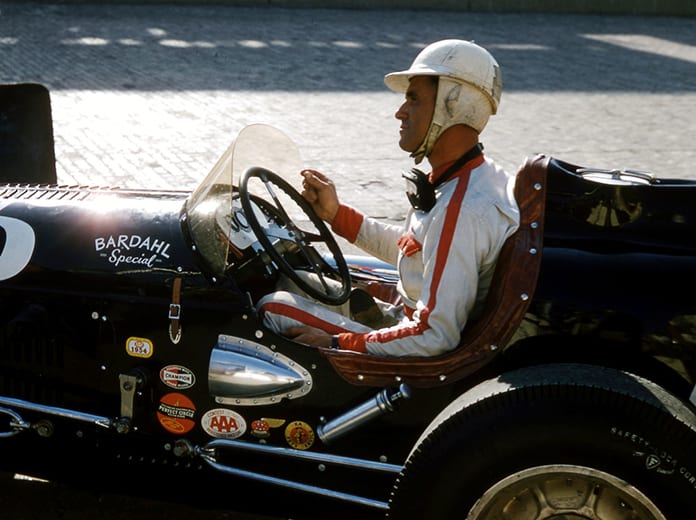Art Cross had three life goals — win the Indianapolis 500, buy a farm and contently raise corn and kids.
The latter two he accomplished admirably and he came tantalizingly close to winning the 500 when he finished second to Bill Vukovich in 1953.
Born in Jersey City, N.J., in 1918, Cross thrashed about attempting to determine what to do with his life. Then, he came across an ad for a midget car and bought it on a lark.
Cross recruited some buddies, who helped him lay out a track in a parking lot, and the friends took turns timing each other around the makeshift course.
Other than a temporary distraction, Cross had no plans for the car until a chance encounter in 1938. A guy, who as it turned out was a car owner, passed the lot, watched their antics and invited them to try their hand in real midget races at a Long Island track.
“Why not?” they decided. The guys elected Cross to drive, launching his professional career.
Almost immediately, Cross’ prowess in the outdated, motorcycle engine-powered car caught the attention of other car owners. They offered him rides in better equipment and Cross responded with spectacular performances. But World War II broke out and racing jolted to a halt.
Cross joined the Army and was frequently in some of the most hostile battles of the war. Wounded during the Battle of the Bulge, Cross received the Purple Heart.
Following the war, Cross returned to midget racing. The midgets were running somewhere seven days a week, drawing a dynamic fan following. The competition was intense. Cross thrived.
Driving for famed car owner, Roscoe “Pappy” Hough, whose five potent midgets the press tagged the “Five Iron Pigs,” Cross made a shambles of the competition. At New Jersey’s Hinchliffe Stadium alone, he won 47 features.
Building on that success, he moved to the Midwest in 1949 to pursue the lucrative purses of the AAA. He settled in La Porte, Ind., with his wife Margaret, who he’d met at Hinchliffe Stadium. Cross continued winning, capturing the 1951 AAA midget championship and turning his focus to his ultimate goal — Indianapolis.
Cross saw his first 500 that same year, paying 50 cents to watch with a group of fans on a multi-story scaffold erected outside the track. He saw enough of the action to determine he could “race with those guys.”
In 1952, he did just that. Cross qualified Ray Brady’s Bowes Seal Fast Kurtis/Offy in 20th and finished fifth, earning the first Indy 500 Rookie of the Year award.
With his winnings Cross bought a 40-acre farm near La Porte and began raising corn and kids. Two goals checked off his list, one to go.
For the 1953 Indianapolis 500, Cross’ ride was the highly regarded Springfield Welding Special owned by Bessie Lee Paoli. Despite her groundbreaking achievements as a woman car owner, Paoli wasn’t allowed in the pits, communicating with her team by passing notes through the fence. Cross qualified 12th.
Race day was one of the hottest in speedway history with stifling humidity adding to the misery. One driver, Carl Scarborough, died and half the field begged for relief drivers.
When the checkered flag waved, Vukovich and Cross were among the few who finished the race without help. Cross returned to Indianapolis the next two years and led both times, but missed a victory.
Cross last raced at Milwaukee in 1955. He started 11th, charged to the lead and spun. After pitting for new tires, he fought his way back to the lead only to run out of fuel.
The crew had rigged a gallon gas can between his legs for just such an eventuality, but Cross couldn’t get it to feed. Forced to pit again, he fought his way back to fourth.
Even though Cross missed his goal of winning the Indianapolis 500, he accomplished plenty.
He never regretted retiring in his prime and contentedly raised corn, kids and grandkids until his death on April 5, 2005.
